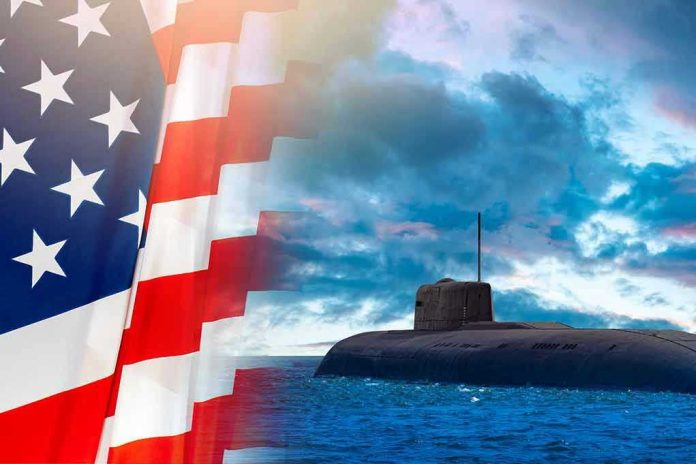
President Trump announced the United States will share classified nuclear submarine technology with South Korea, marking a dramatic shift in American nuclear cooperation policy that could reshape Pacific power dynamics.
Story Snapshot
- Trump commits to sharing nuclear submarine technology with South Korea
- Move represents unprecedented expansion of US nuclear cooperation beyond traditional allies
- Decision follows high-stakes meeting between Trump and South Korean president
- Policy shift could trigger regional arms race and complicate China relations
Historic Nuclear Technology Transfer Announced
Trump’s social media declaration represents a seismic shift in American defense policy. The United States has historically guarded nuclear submarine technology as one of its most sensitive military secrets, sharing it only with the United Kingdom through the special relationship forged in World War II. This announcement places South Korea in an exclusive club of nations trusted with America’s most advanced maritime nuclear capabilities.
Strategic Implications for Pacific Security
The timing of this announcement reveals the administration’s growing concerns about China’s expanding naval presence in the South China Sea and North Korea’s continued nuclear provocations. Nuclear-powered submarines offer South Korea unprecedented underwater endurance and stealth capabilities, allowing extended patrols far from home waters without surfacing for weeks or months. This technology transfer fundamentally alters the regional military balance.
South Korea’s conventional diesel-electric submarines, while capable, require frequent surfacing to recharge batteries and have limited range compared to nuclear vessels. Nuclear propulsion would enable South Korean submarines to operate throughout the Pacific, potentially reaching Chinese naval bases and monitoring North Korean maritime activities with unprecedented effectiveness.
Breaking Decades of Nuclear Nonproliferation Precedent
This decision challenges established nonproliferation norms that have governed American nuclear technology sharing for decades. Previous administrations maintained strict controls over nuclear submarine technology, viewing its proliferation as potentially destabilizing. The announcement signals Trump’s willingness to prioritize strategic partnerships over traditional nonproliferation concerns when confronting rising threats from China and North Korea.
🇺🇸🇰🇷⚠️ South Korea may soon build its first nuclear-powered submarine — with approval reportedly coming straight from Trump.
If this turns out to be true, it’s more than just a deal. It’s a seismic shift that could redraw the Pacific power map and trigger a fresh arms race with… pic.twitter.com/P8cWxMgivP
— Defense Intelligence (@DI313_) October 30, 2025
The move parallels the recent AUKUS agreement between the United States, United Kingdom, and Australia, where America agreed to help Australia develop nuclear-powered submarines. However, extending this cooperation to South Korea represents an even bolder step, given the peninsula’s complex security environment and proximity to both Chinese and Russian naval forces.
Regional Response and Future Complications
China will likely view this technology transfer as a direct challenge to its regional ambitions, potentially accelerating its own submarine construction programs and military modernization efforts. North Korea may use the announcement to justify expanding its own nuclear capabilities, claiming defensive necessity against enhanced South Korean maritime power. Japan, despite its alliance with both the United States and South Korea, may harbor concerns about another regional power acquiring advanced nuclear propulsion technology.
The technical and financial challenges facing South Korea should not be underestimated. Building nuclear submarines requires sophisticated nuclear engineering expertise, specialized shipbuilding facilities, and enormous financial resources. Australia’s nuclear submarine program is estimated to cost over $200 billion, suggesting South Korea faces similar massive investments to realize this capability.
Sources:
Trump says South Korea has approval to build nuclear-powered submarine







